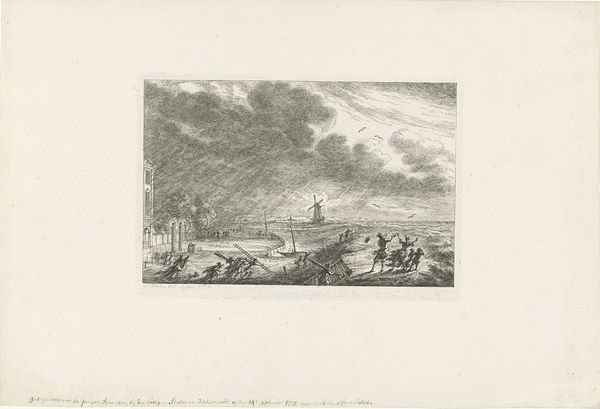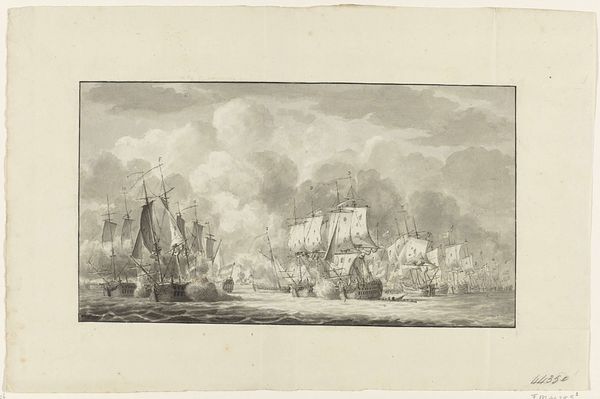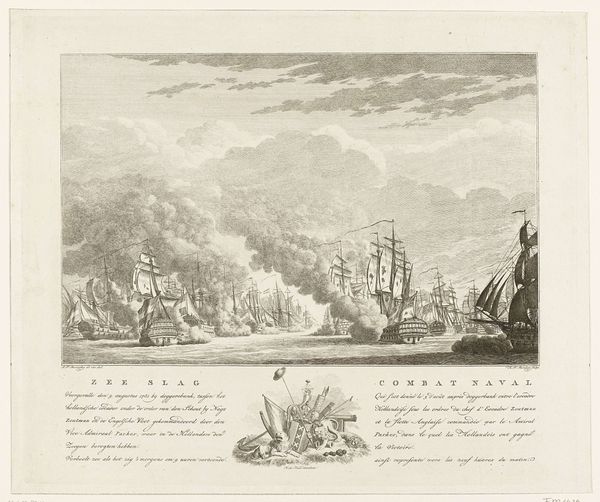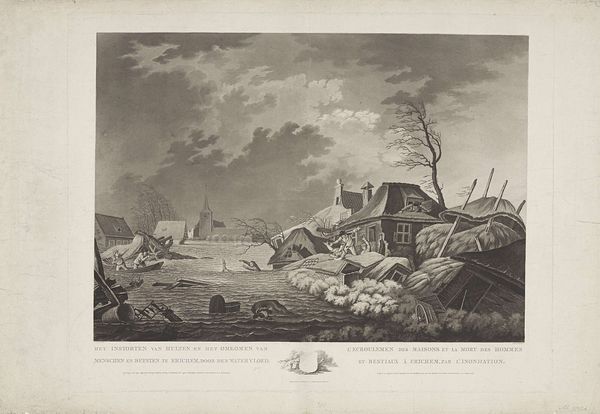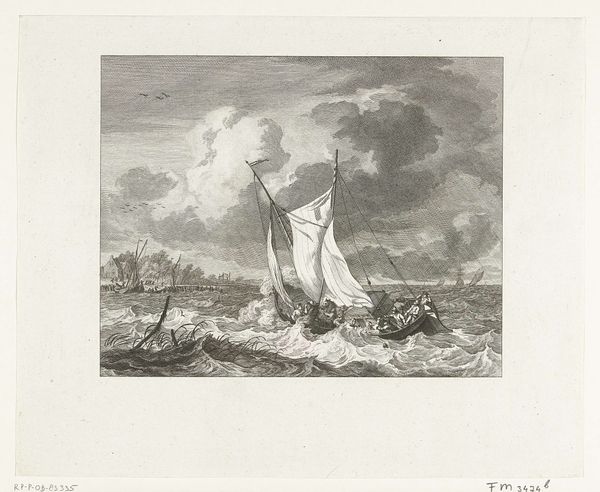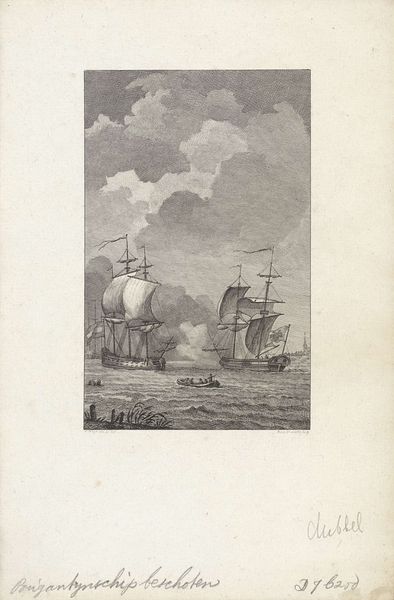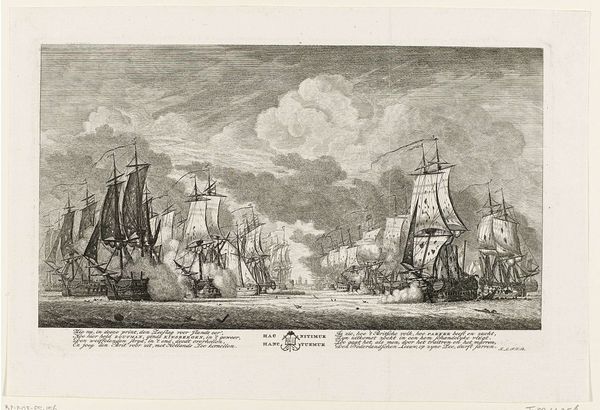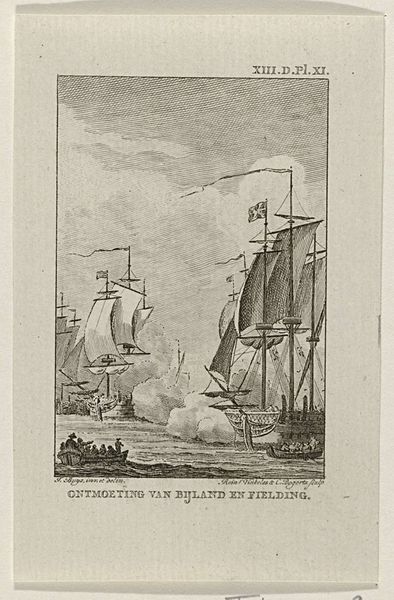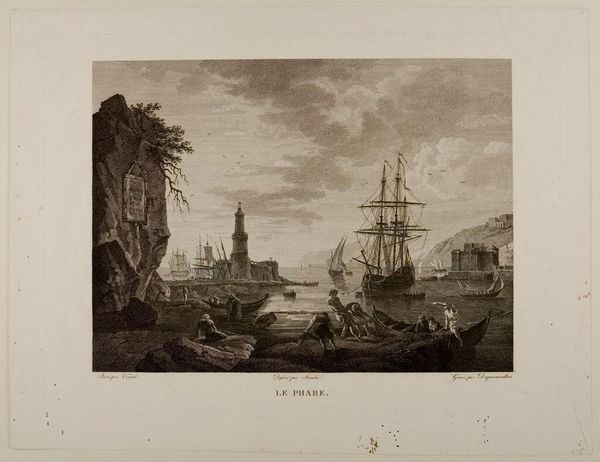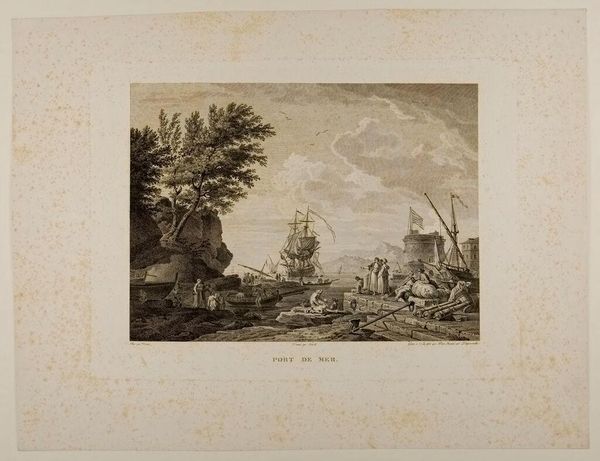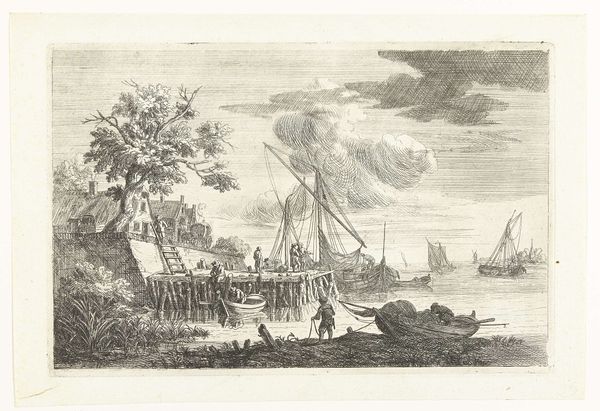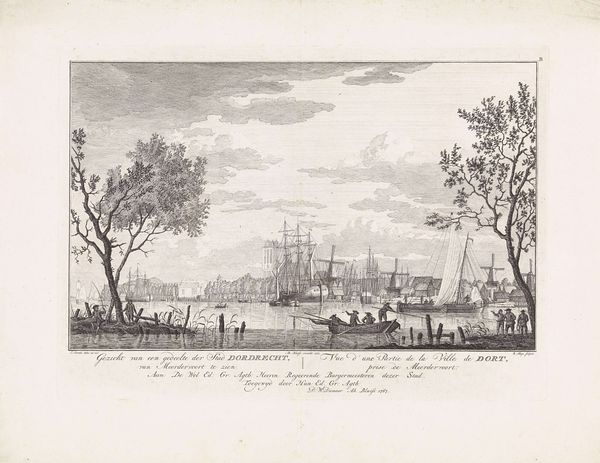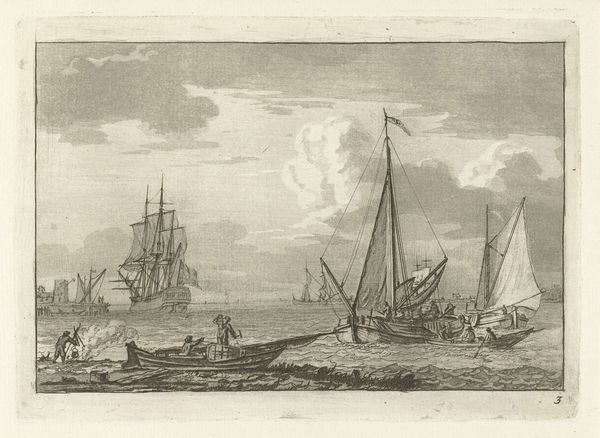
Dimensions: height 231 mm, width 151 mm
Copyright: Rijks Museum: Open Domain
Curator: This is Reinier Vinkeles's "Zeeslag bij Doggersbank, 1781," an engraving that he created in 1787. Editor: The grey tones create a feeling of dismal chaos—a fleet caught amidst the elements as much as battling each other. The dark clouds gathering above mirroring the smoke plumes, it really emphasizes the uncertain, precarious nature of naval warfare. Curator: Indeed. Vinkeles masterfully captures that feeling of uncertainty through line and shading. This print depicts the Battle of Dogger Bank, a naval engagement between the British and Dutch during the Fourth Anglo-Dutch War. It’s fascinating to see how historical events like this become subjects of public record through art. It’s important to note that the Dutch claimed victory although most historians see it as a draw. Editor: I see what you mean about the public record. Prints like this really shaped public opinion; they were accessible ways for people to visualize events and form their own ideas about them, to perhaps be swayed by Dutch propaganda if they didn't scrutinize it too much. It highlights the politics of imagery, how power uses artistic representations to assert dominance or craft national narratives. Curator: Absolutely, and if we consider the socio-political context of the 1780s, the Dutch Republic was facing considerable internal strife and external pressures. These representations of maritime strength provided a form of symbolic capital and potentially offered hope. Prints were sold widely, becoming a source of visual information for the people. Editor: It's also fascinating how the romanticized landscape—that sweeping sky—plays into this. We often view art of war as inherently masculine but I see some landscape features in here and I am immediately questioning who were those folks involved who were rendered invisible in conventional telling. Were there women or colonial subjects on these ships or on shore waiting for the outcomes who contributed to these sea battles, even if from afar? It invites a queer reading of the scene, beyond just national triumph. Curator: It’s an interesting proposition to reconsider established readings of historical events via this lens. This work exemplifies how art functioned as a means of historical record and public communication. Editor: Indeed. The layered interpretations underscore its enduring power and importance.
Comments
No comments
Be the first to comment and join the conversation on the ultimate creative platform.
